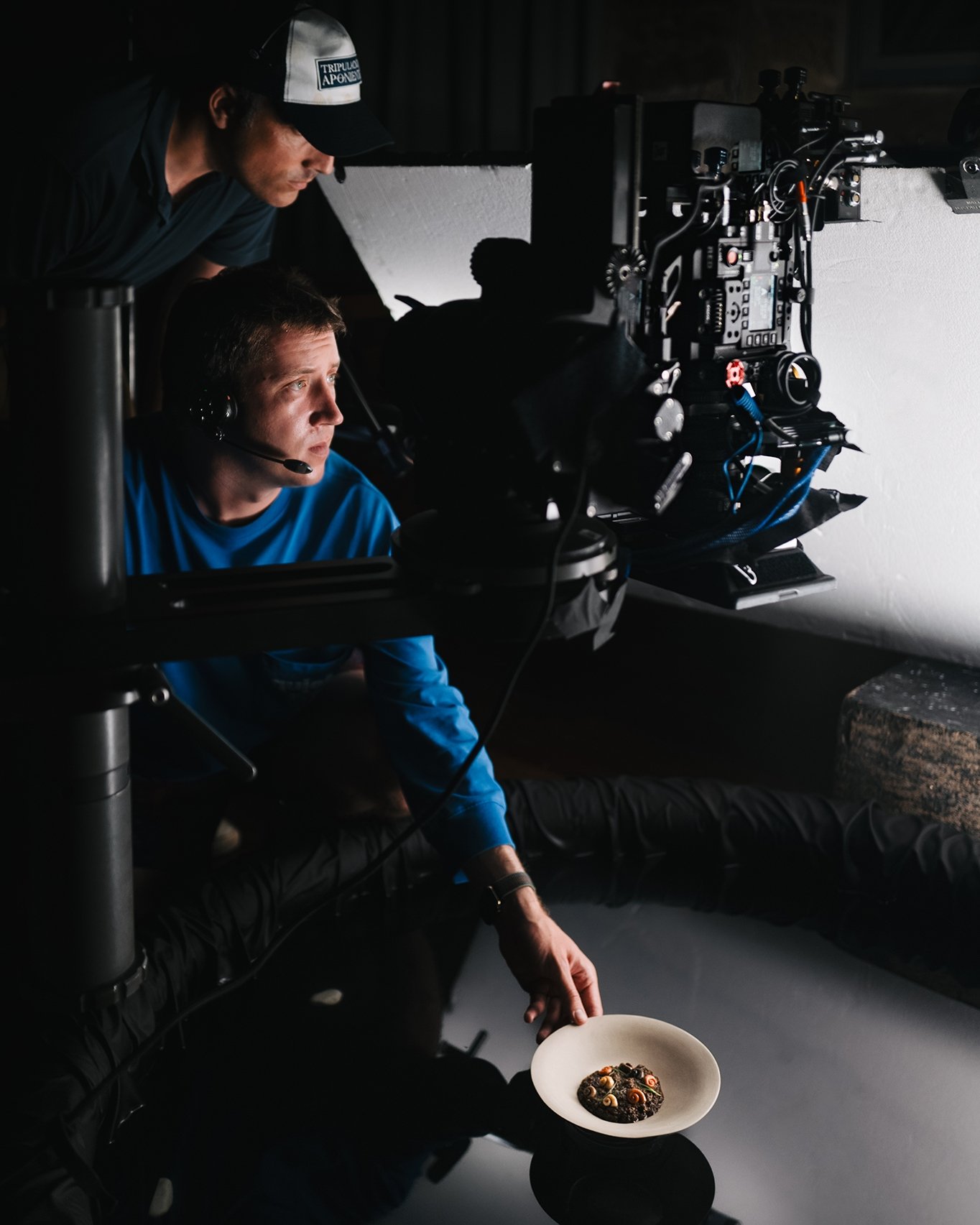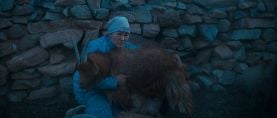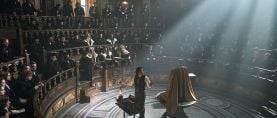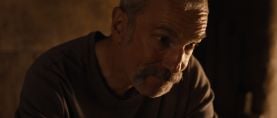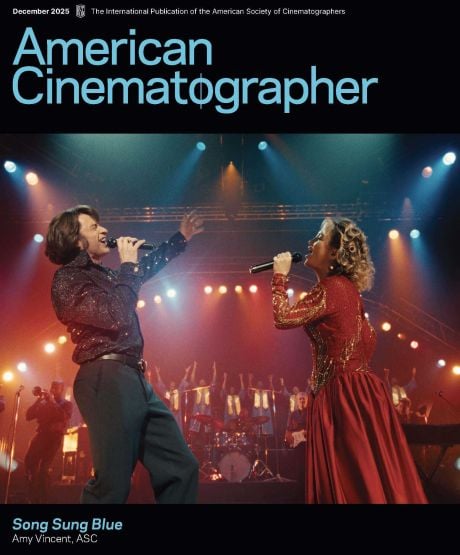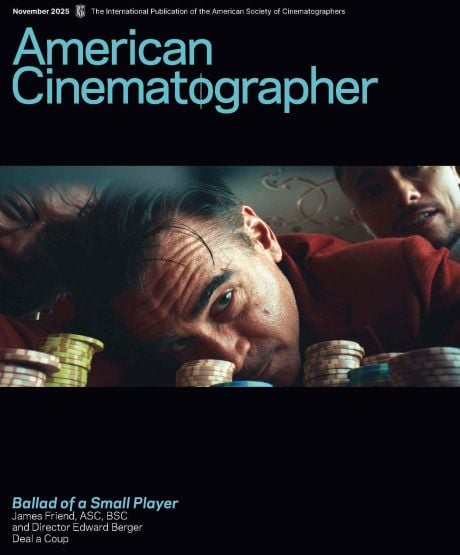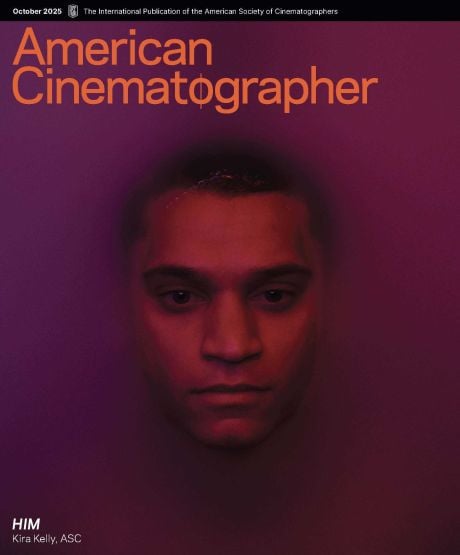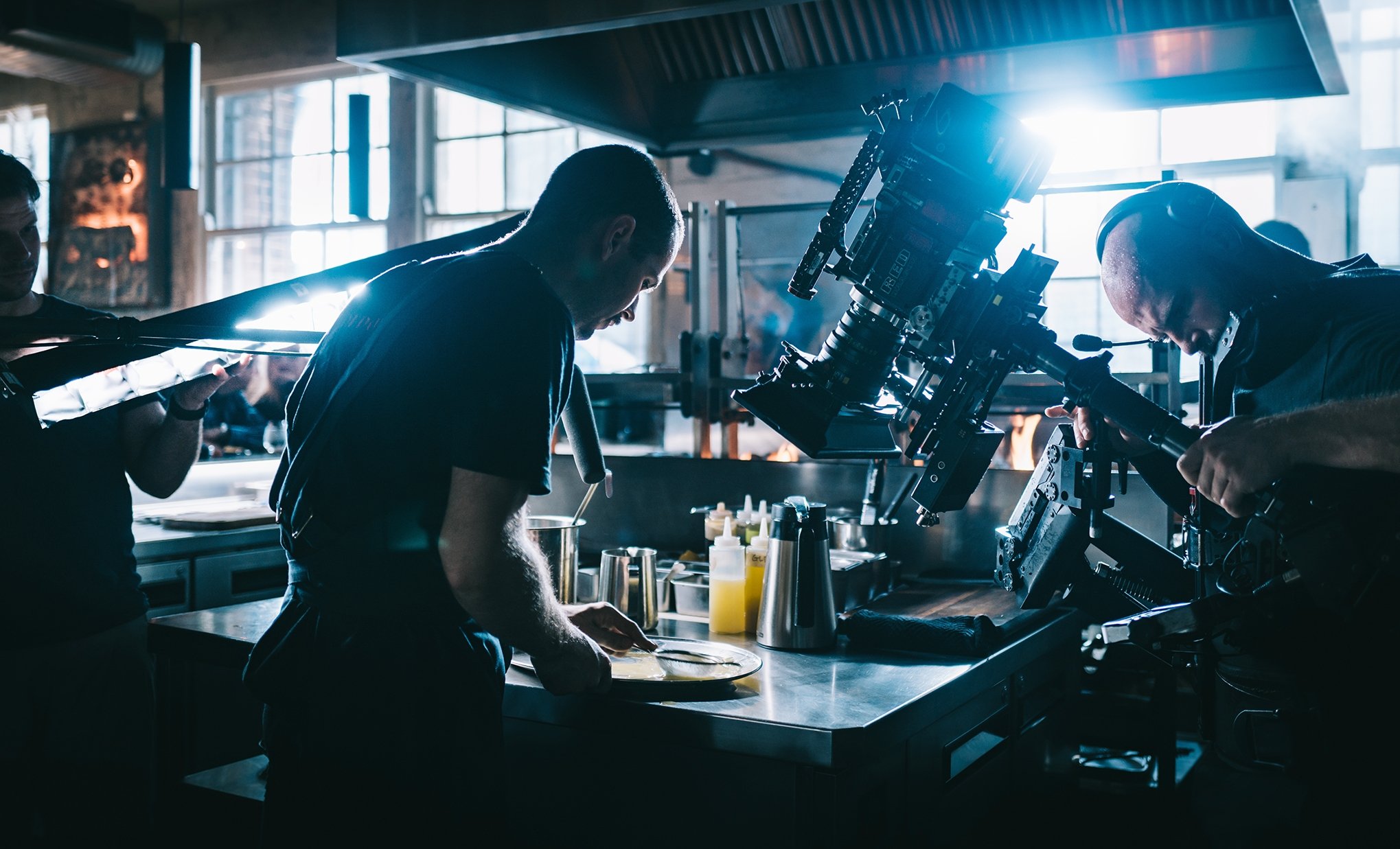
Chef’s Table: A Tasting Menu
Adam Bricker, ASC serves up his secret recipe to shooting this long-running foodie-favorite documentary series.
Photos courtesy of Netflix
Inspiring culinary tales, remarkable food, and sumptuous cinematography — these are three key ingredients that go into Chef’s Table, the Netflix original series which dives into the stories behind the finest chefs and dishes around the globe. Since its debut in 2015, the show spans seven Volumes (series) so far, along with an occasional side series focusing on Pastry, France, BBQ, Pizza, Noodles, and, for 2025, Legends. Hey, there’s a lot of food to sample.
Behind the camera since that very first dish is Adam Bricker, ASC, a four-time ASC Award nominee (three for the dramatic series Hacks, one for Chef’s Table: Pizza) and four-time Emmy Award nominee (again, three Hacks and one Chef’s Table). With cinematographer Will Basanta, the two helped craft a high-concept, cinematic approach to the globetrotting gastro-travel series. Bricker, who shot the Chef’s Table: Legends episode “Jamie Oliver” sat down with American Cinematographer to reveal his visual recipe.
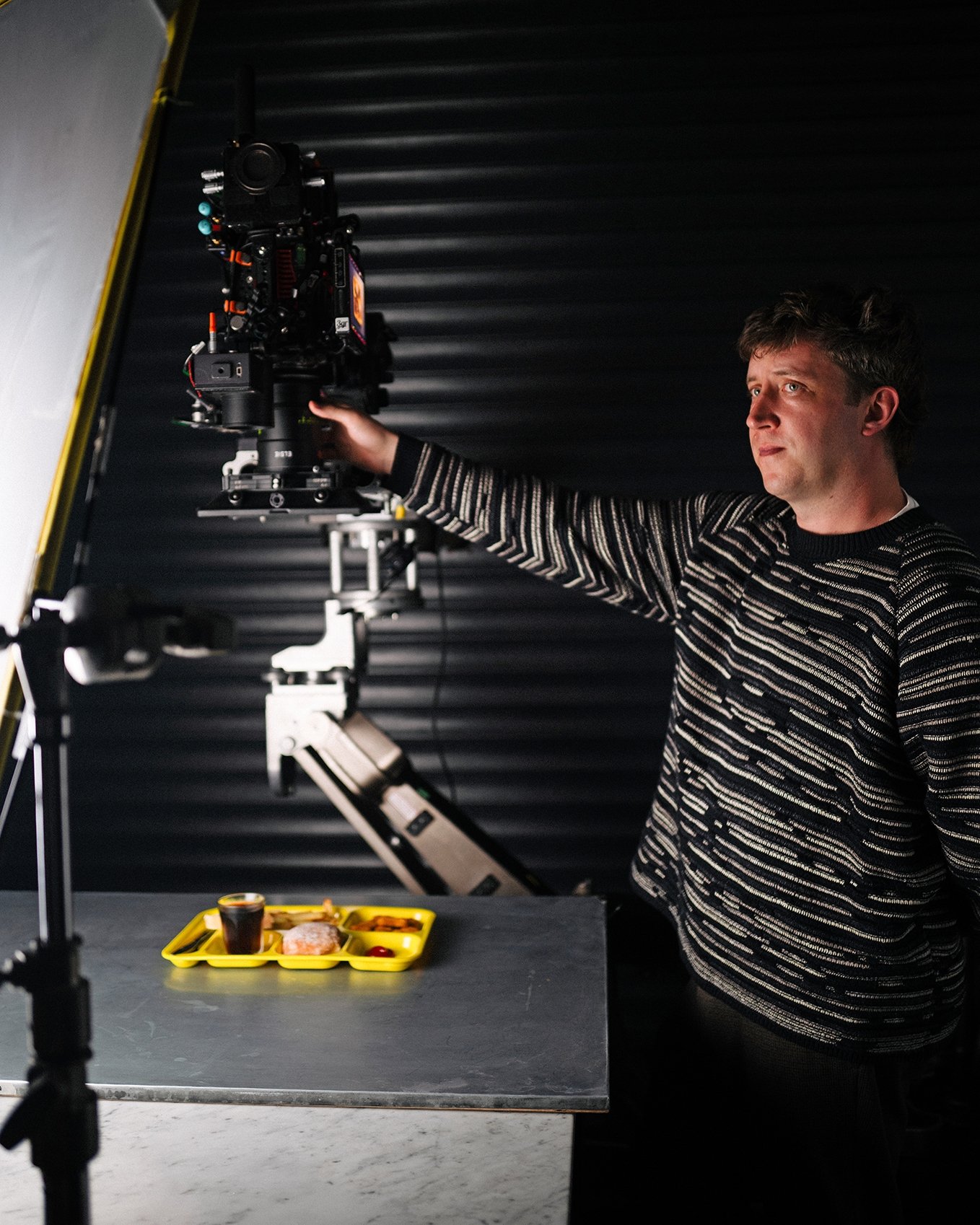
American Cinematographer: With a body of work heavy in fictional television, how did you get connected to this type of nonfiction series?
Adam Bricker, ASC: I had just started working with Brian McGinn, one of Chef’s Table EPs, around the time he, David Gelb, and Andrew Fried were putting the show together. There was definitely a right place / right time aspect to it. The first project Brian and I did required a great deal of travel, and we realized we worked well together on the road. When they were selecting DPs, Brian graciously threw my hat in the ring.
They ultimately brought me and cinematographer Will Basanta [also an Emmy nominee for the show] on to develop the look. The series was inspired by David’s feature documentary, Jiro Dreams of Sushi [2011]. The visuals were foundational for Will and me – Jiro is a master class in cinematic documentary filmmaking.
Brian and I put a small team together and traveled to Australia to shoot the pilot of what was then called Chef’s Story in 2014. It was exciting and intimidating to put our ideas to the test in the tight confines of chef Ben Shewry’s Attica kitchen. Will and I alternated that first season. He’s such a talented DP and has shot some of the most beautiful episodes of the series. It’s become my own personal inside joke that whenever anyone references the show to me, they’re usually Will’s episodes.
It’s true that I had very limited documentary experience at the time and had never shot food. In some ways that naivety led the design of the show, because I really approached it as I would a narrative project. We didn’t think to rely on zoom lenses and lightweight sticks, the usual must-haves on a documentary. We imagined that Chef’s Table could be a cinematic experience. We thought about the narrative structure, world creation, color palette. The same intention that these chefs put into their tasting menus, we wanted to put into our filmmaking.
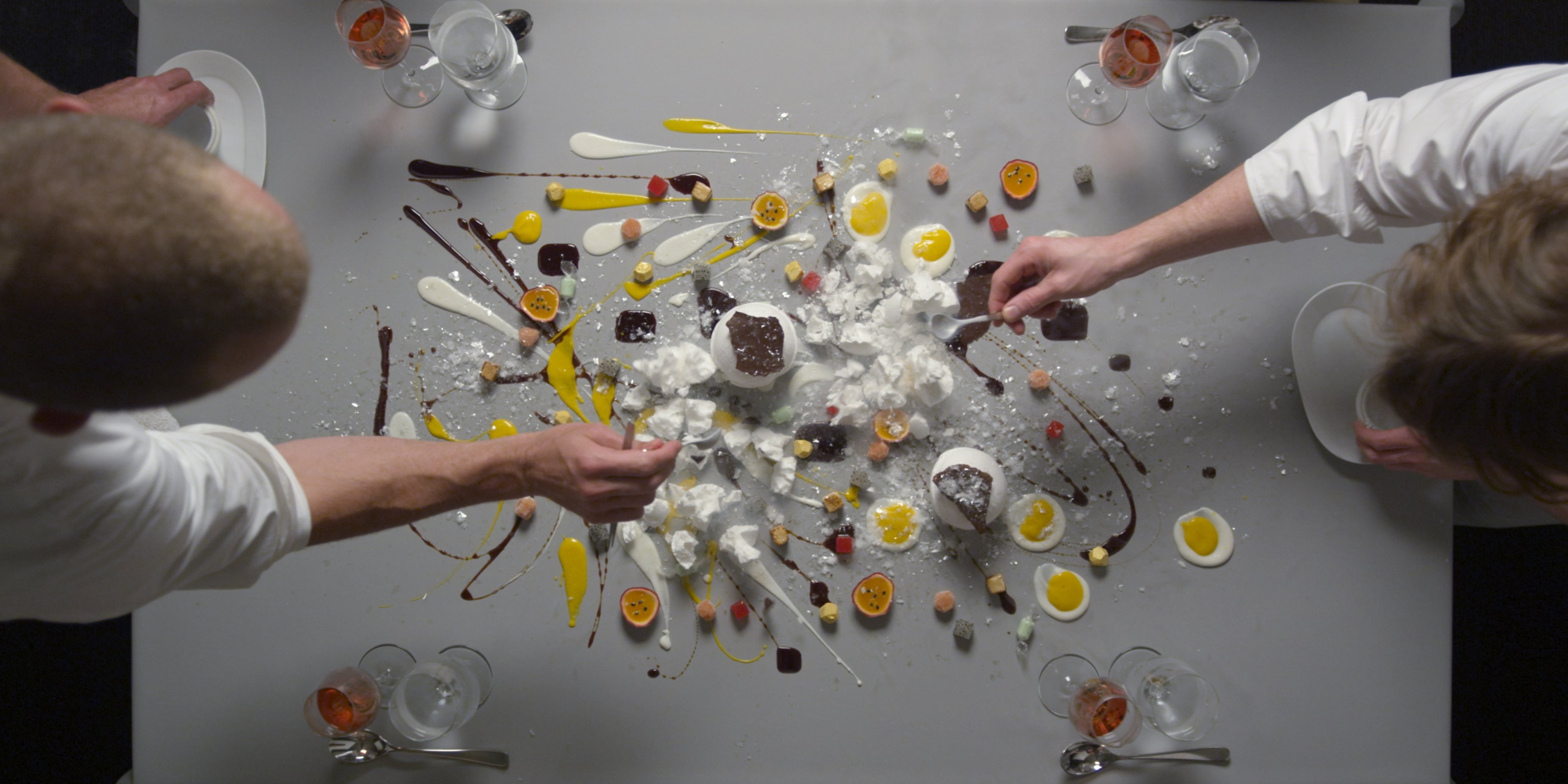
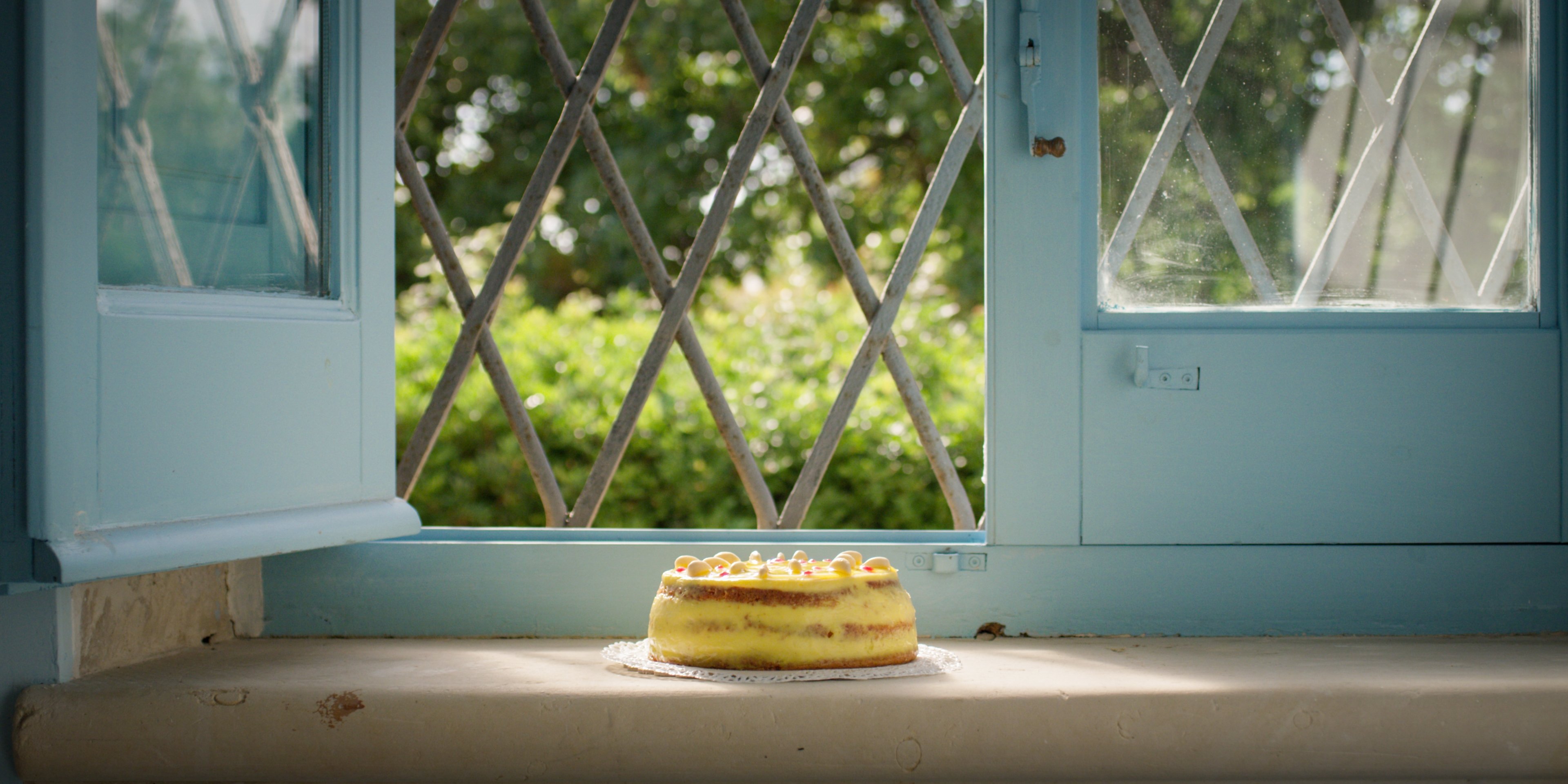
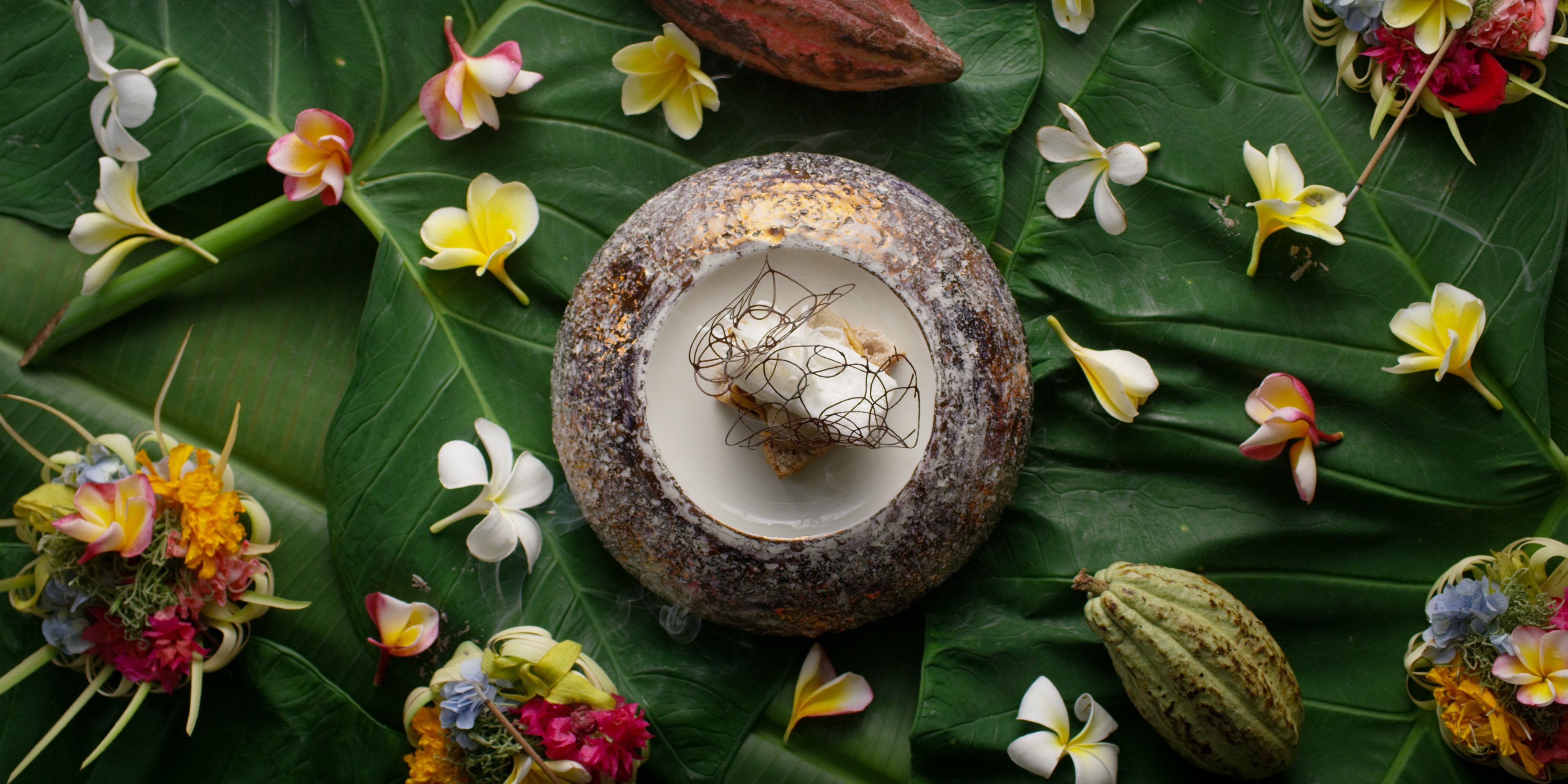
It is part documentary, part elevated, cinematic experience, much like something you’d see from, say, NFL Films.
I love that reference. It’s a romantic interpretation of the sport, incredibly filmic. Their approach brings you so much closer to these athletes and the beauty of what they’re able to do, more than you’d ever be able to see as a spectator. That’s something we always strive for with our chefs – that our visuals are heightened enough to get closer to the truth of their work.
The way you maintain a uniform look from volume to volume over 10 years is impressive. How are you able to maintain such consistent cinematic language?
I think we can attribute the continuity to a few key factors. Most importantly, the Chef's Table crew has remained largely consistent over the last decade. Though many of us went to film school together or were friends before, we’ve really become a family. That we get to travel the world and eat the best food probably doesn’t hurt retention either. As time went on and Will and I could no longer shoot every episode, our camera assistants — Chloe Weaver, Charlie Panian, and Alexander Paul — all went on to DP their own episodes, along with cinematographers Matthew Chavez, David Bolen, and Sam Davis.
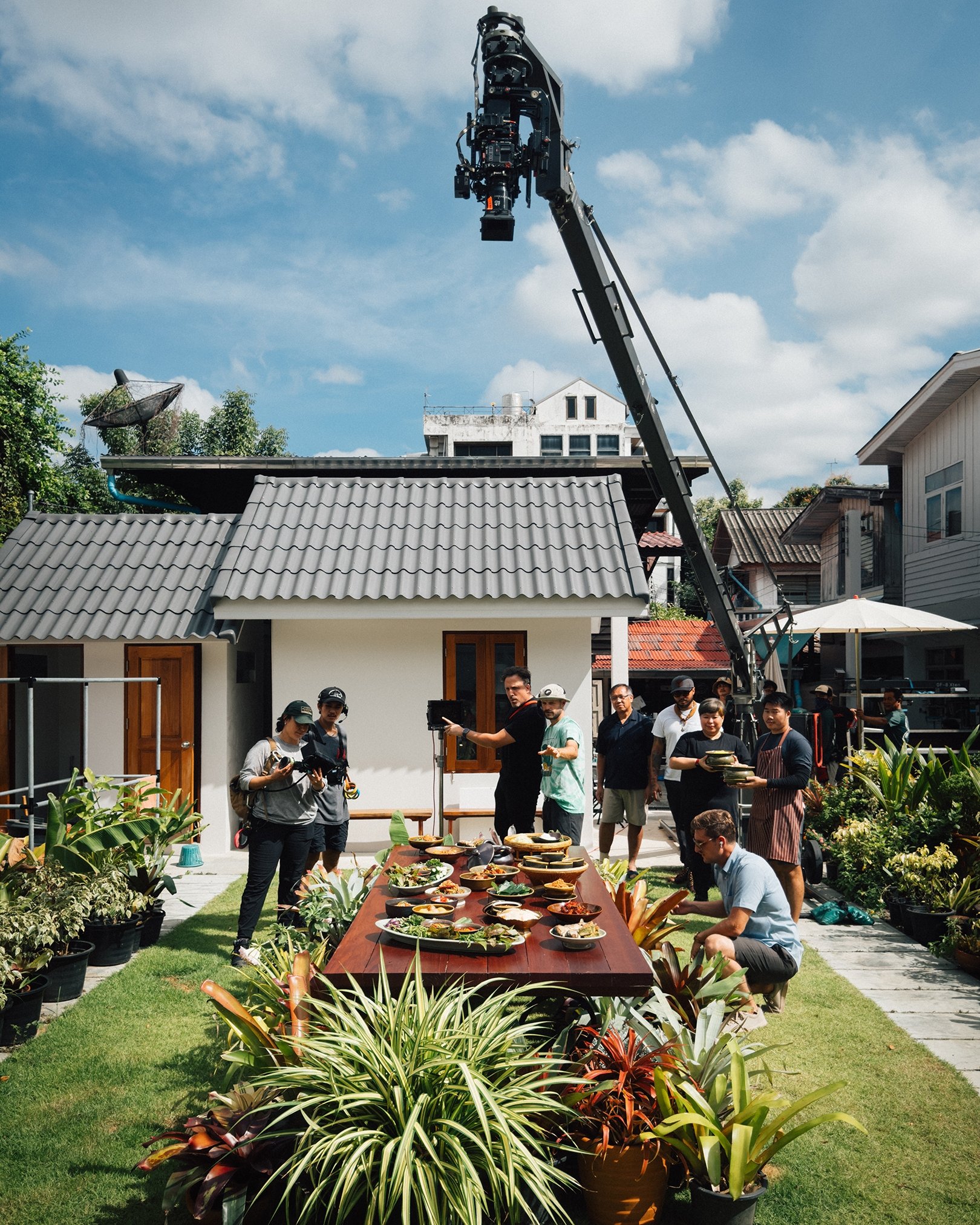
As far as style goes, we elected to shoot everything on primes instead of zooms. Not the easiest logistically, especially in these intense kitchen environments, but creatively that choice had an enormous impact. I shot the pilot almost exclusively on a 25mm prime, which meant I needed to move with the camera to get different frame sizes and immerse myself in the flow of a working Michelin-star kitchen. We had to always move with intentionality instead of hanging back in a corner, kicking a zoom in and out. More than anything else, I think that intentional camera work is the show’s signature.
Lastly, we’ve shot on RED from the very beginning. Even back in 2015, Netflix was already prioritizing 4K, which meant we needed a camera that could deliver on resolution but in a small body for maximum maneuverability. We shot season one on EPIC DRAGON, eventually graduating to the EPIC-W, and just shot our Legends season on RAPTOR with its 8K VistaVision-sized sensor. RED has been so supportive of the show, and it’s been amazing to grow with them.
“I learned early on that what’s most important are the lights I’m turning off. I walk into a kitchen and start flipping switches — what can I get rid of to make it more focused, single-source?”
— Adam Bricker, ASC
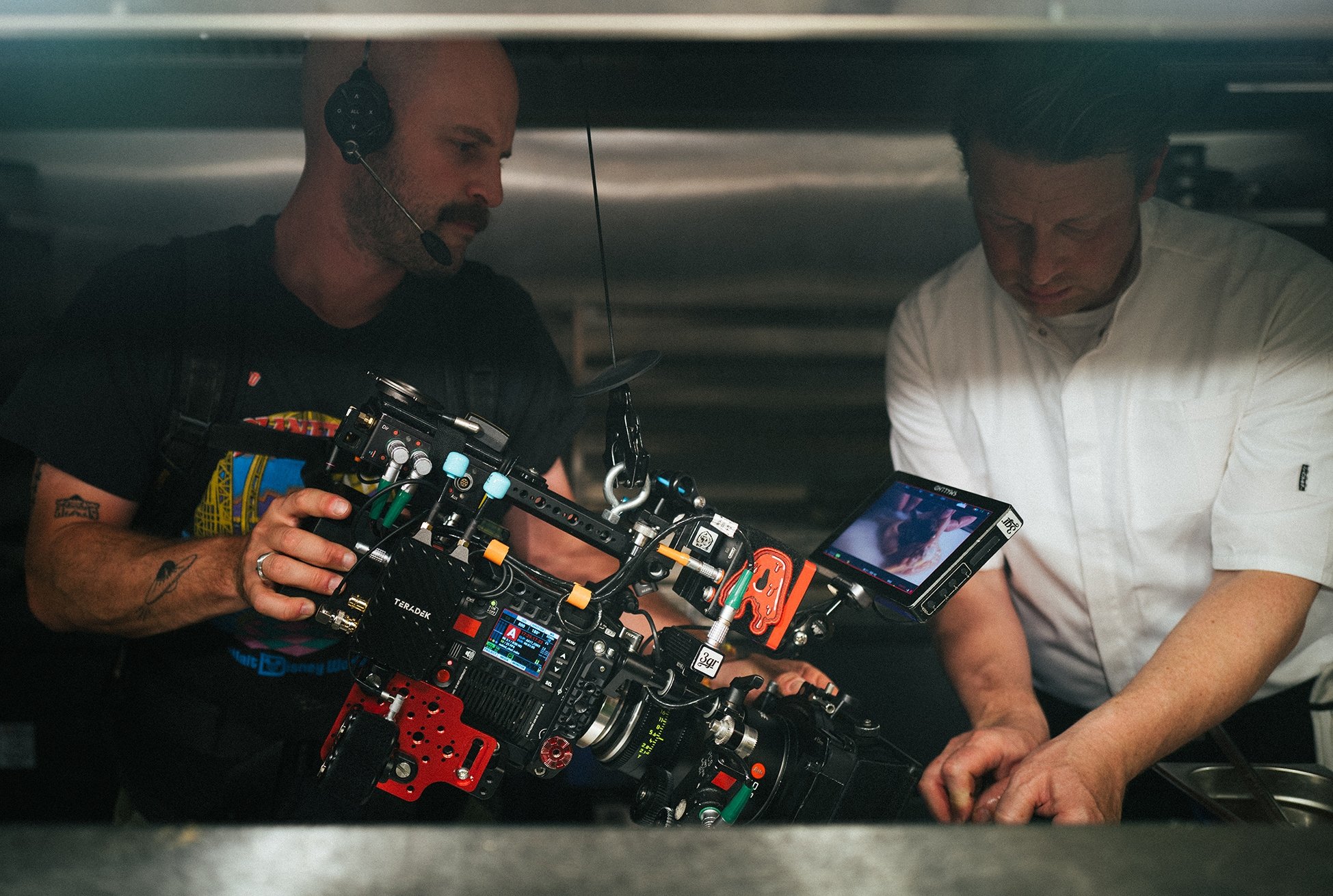
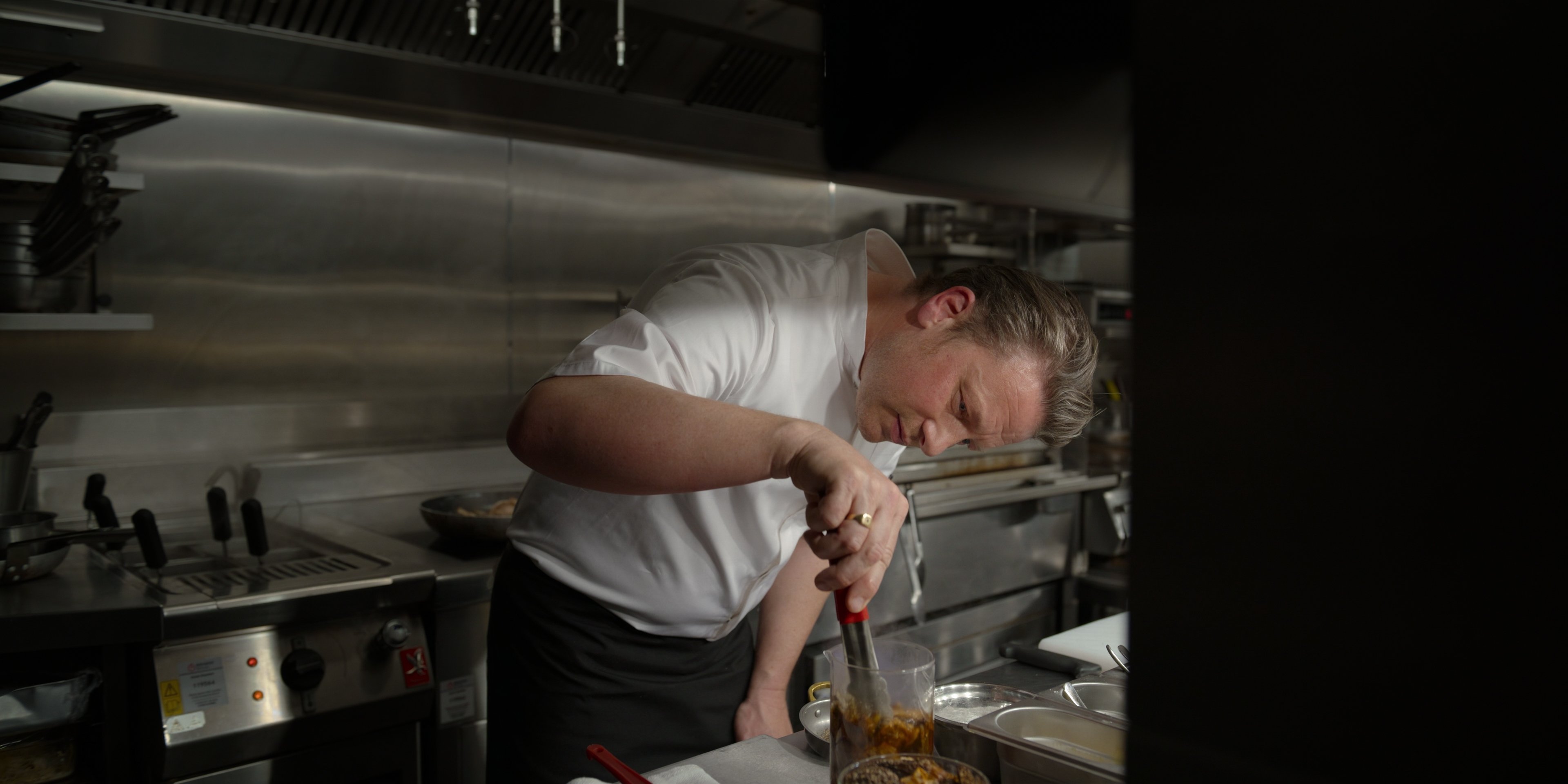
The Jamie Oliver episode of Legends is one of the most unique because there is so much material available to you from his being such a public figure in the media.
Not only was there a huge amount of archival, but it was all revolutionary work. Before Jamie came along, cooking shows were three-camera, formal kitchen sets. That he made a run-and-gun, documentary-style show shot on video, 8mm and 16mm in his own kitchen was groundbreaking from a cinematography perspective. We felt a lot of pressure to do justice to that and tell this story the right way. Ultimately, we decided to shoot large format to maximize the visual distinction between our footage and the archival, but also to honor the epic scale of Jamie’s story.
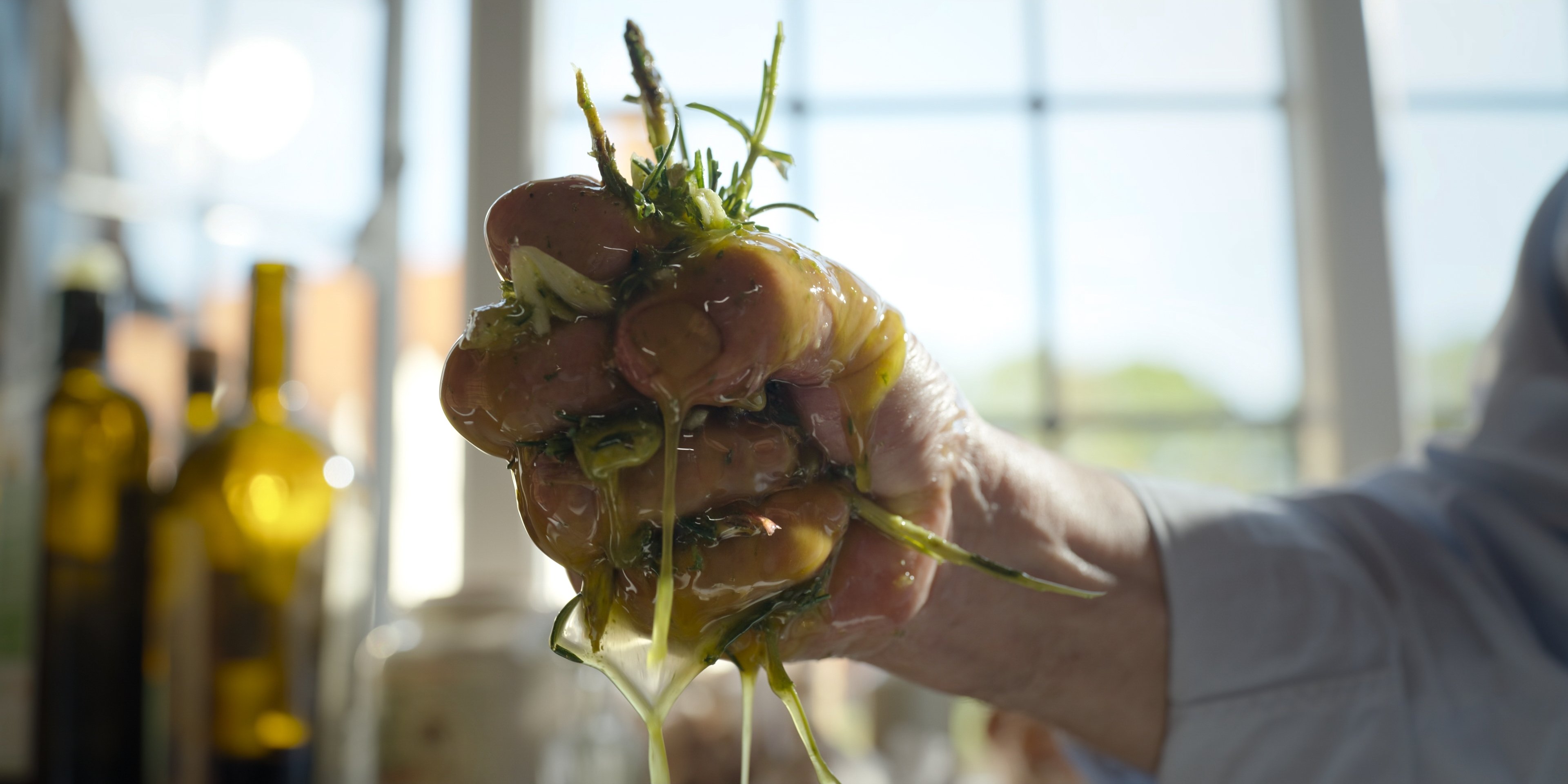
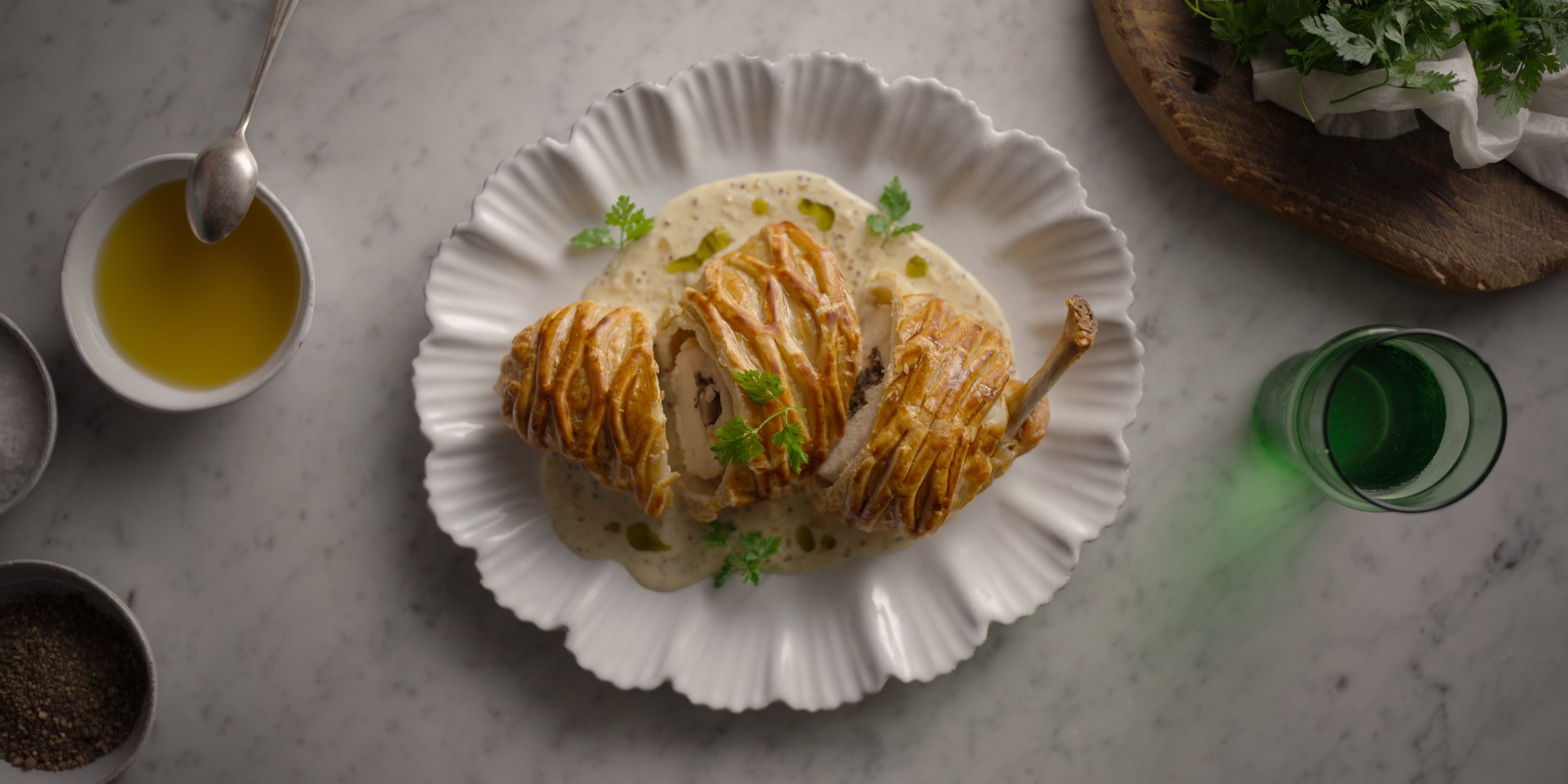
Not to call the show formulaic — because the chefs are all different, the food is different, the locations are different from episode to episode — but there is a consistent visual language and style.
Definitely. The structure evolved over the course of the first couple seasons. There's a naturally lit interview, where it feels like you're sitting across from the chefs and they’re talking to you. Then we’ll be in the kitchen with beautiful, motivated light that respects the care our chefs put into their work. We go out into the world with the chef and call that location work “verité.” And we culminate with the food symphony, where we see all the finished dishes we just learned about with iconic title cards at the bottom.
Once that structure emerged, it allowed us to tell the stories of these chefs in a limited amount of time – usually only 8 or 9 shoot days per episode. Within that structure, we’re always pushing ourselves to take things to the next level. Then sometimes you can break the mold entirely. And that’s what’s fun about working on a show for 10 years – the moments you choose to break the rules are just as important.
You graduated through the RED camera lineup over the years. Did you follow a similar trajectory with your prime lens choices?
We started on the Cooke S4 lenses for the first season, then switched to the Leitz Summilux-C and Summicron-C family of Super 35 primes. They were lighter, smaller, and uniform in size. I'm still shooting mostly on a 25mm and then sometimes jumping to a 50mm.
We quickly slide in a diopter when we want to get really tight instead of swapping to a special macro lens. We have to be ready to react, such as jumping out to get a bit wider and then diving back in tight on a chef’s hands. The focus pullers on this show are incredible. We do shoot at consistent, civilized stops, like a 2.8/4 split or 4, and then bump up to a 5.6 for the food dishes.
Lenses are actually a good example of where we’ve strategically chosen to break our own rules. For the Chef’s Table: BBQ episode with Lennox Hastie [Season 1, Episode 2], we shot spherical for all the city restaurant work. When he hunted, fished, and barbecued over an open flame in the wilderness, we shot anamorphic to convey that sense of adventure.
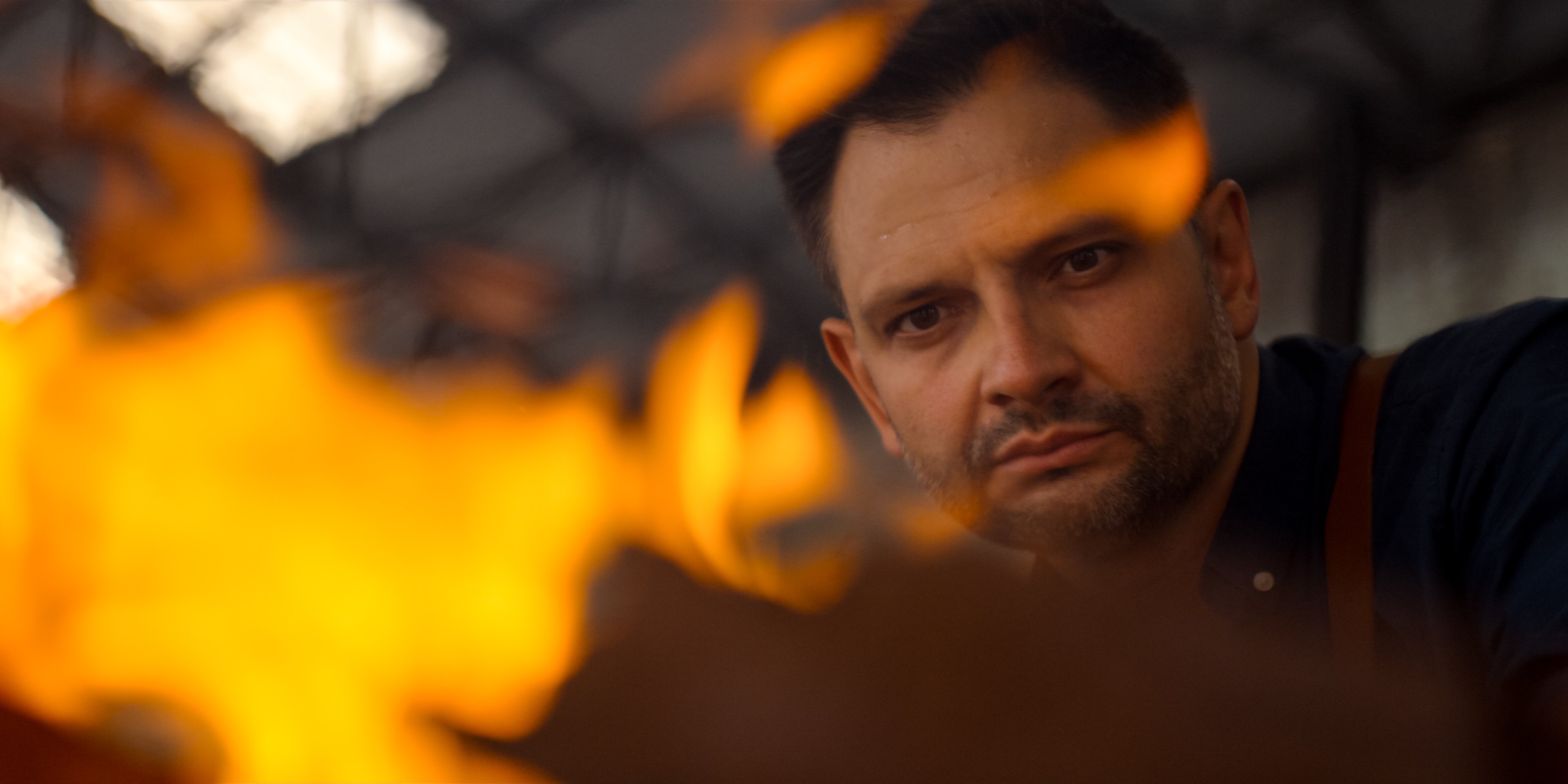
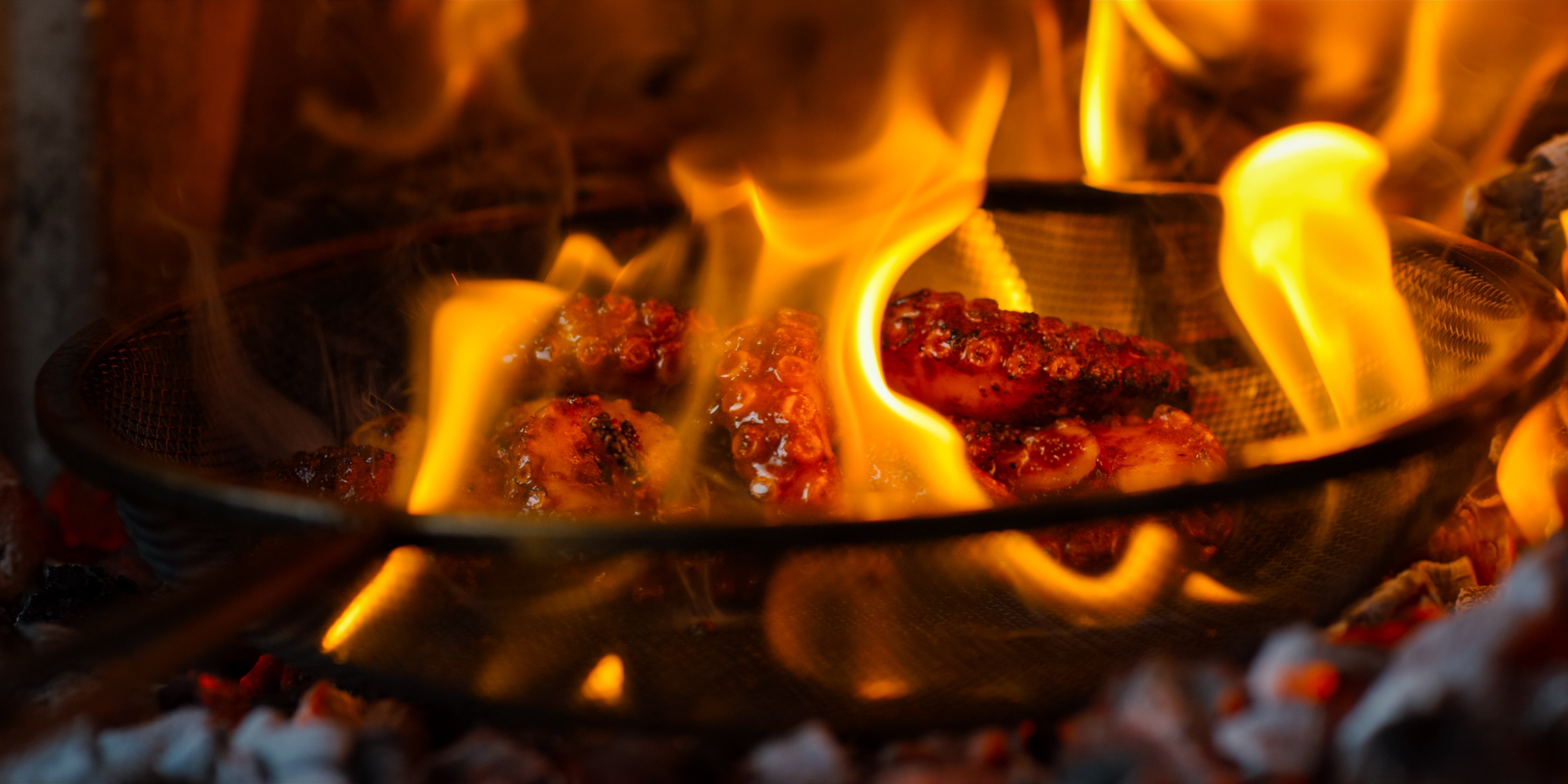
White Rabbit chef Vladimir Mukhin’s mission is to revive traditional Russian cuisine, which had fallen out of the fine-dining scene decades ago. So when we found a set of 1960s primes at a Russian rental house, we knew they’d be perfect for following his journey into the countryside north of Moscow, where many of those traditions were still in practice. Vladimir’s episode [Episode 2, Season 3], was one of my favorite Chef’s Table experiences. We shot some scenes on a moose farm that I feel lucky to have survived, but it was definitely unforgettable.
Because you are framing with your feet, what kind of camera support are you using?
The early seasons were me sweating in a hot kitchen almost entirely handheld on an EasyRig. It was the ideal tool for that. I can be at eye-level shooting the chef, make a split-second decision as they’re dicing or plating, and very quickly drop to waist-height with the EasyRig.
Most of these kitchens are essentially the size of large bathrooms. But Grant Achatz’s kitchen at Alinea [Season 2, Episode 1] is a massive, gorgeous, stainless-steel space. We were able to fly around in there with a Steadicam, and we just fell in love with that footage.
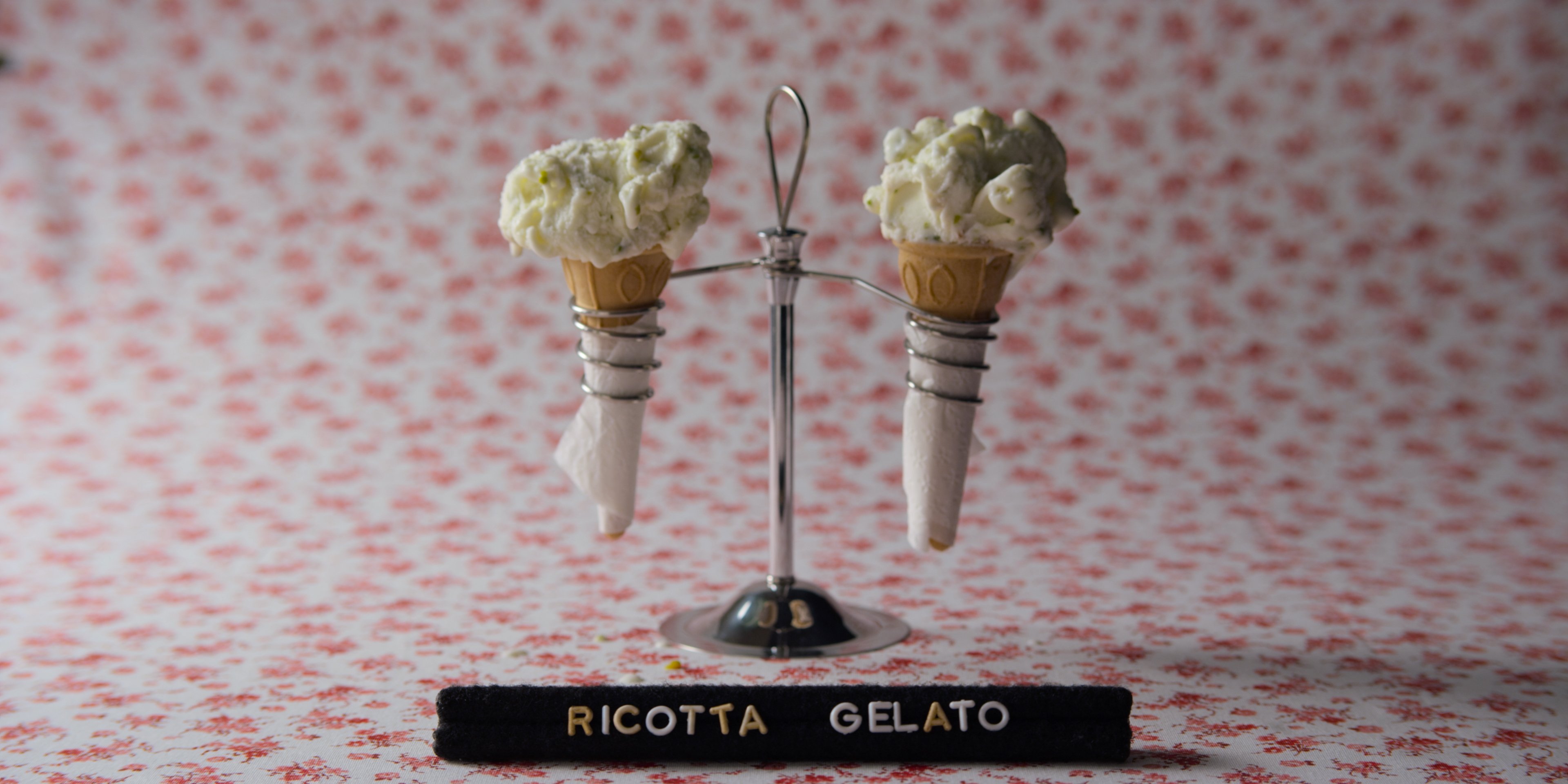
Soon after that episode, we were tasked with the Chef's Table: Pastry season [Season 4 of Chef’s Table]. Brian McGinn and I headed to Sicily to do an episode on pastry chef Corrado Assenza [Episode 2]. It was going to be Corrado’s love letter to this place, and we thought, ‘What if we do this whole episode on Steadicam?’ We enlisted the wonderful operator Joel Marsh, and that was a turning point for us. It allowed us to connect one shot to another fluidly, instead of relying on the edit.
Still, we have to get in there for shots of the hands, and that trusty EasyRig, which has been in so many kitchens over the past 10 years, comes right back out. Thankfully it’s Joel at the helm these days. His operation is so much better than mine ever was.
There is gratuitous use of slow motion.
We definitely employ it liberally.
That’s why the NFL Films reference seemed appropriate — elevated, slow-motion cinematography of athletes that captures the most subtle of movements. You are doing the same, but with chefs. What frame rates are you shooting to capture this?
It’s true, like pro athletes, these are the best chefs in the world. No movement in the kitchen is wasted, and their knife and tweezer work happens so fast you can’t even register them at 24 frames per second. The highest we go is 96. Then we would do a pass at 48, which is a great speed because it’s slow motion but still has some pace. It washes over you and plays elegantly with the beautiful score of Chef's Table. Some of my favorite moments are when we live in that slow-motion photography and then snap back to the speed of the kitchen at 24. You feel that energy, the sound rushes in, and we’re right back in the thick of it.
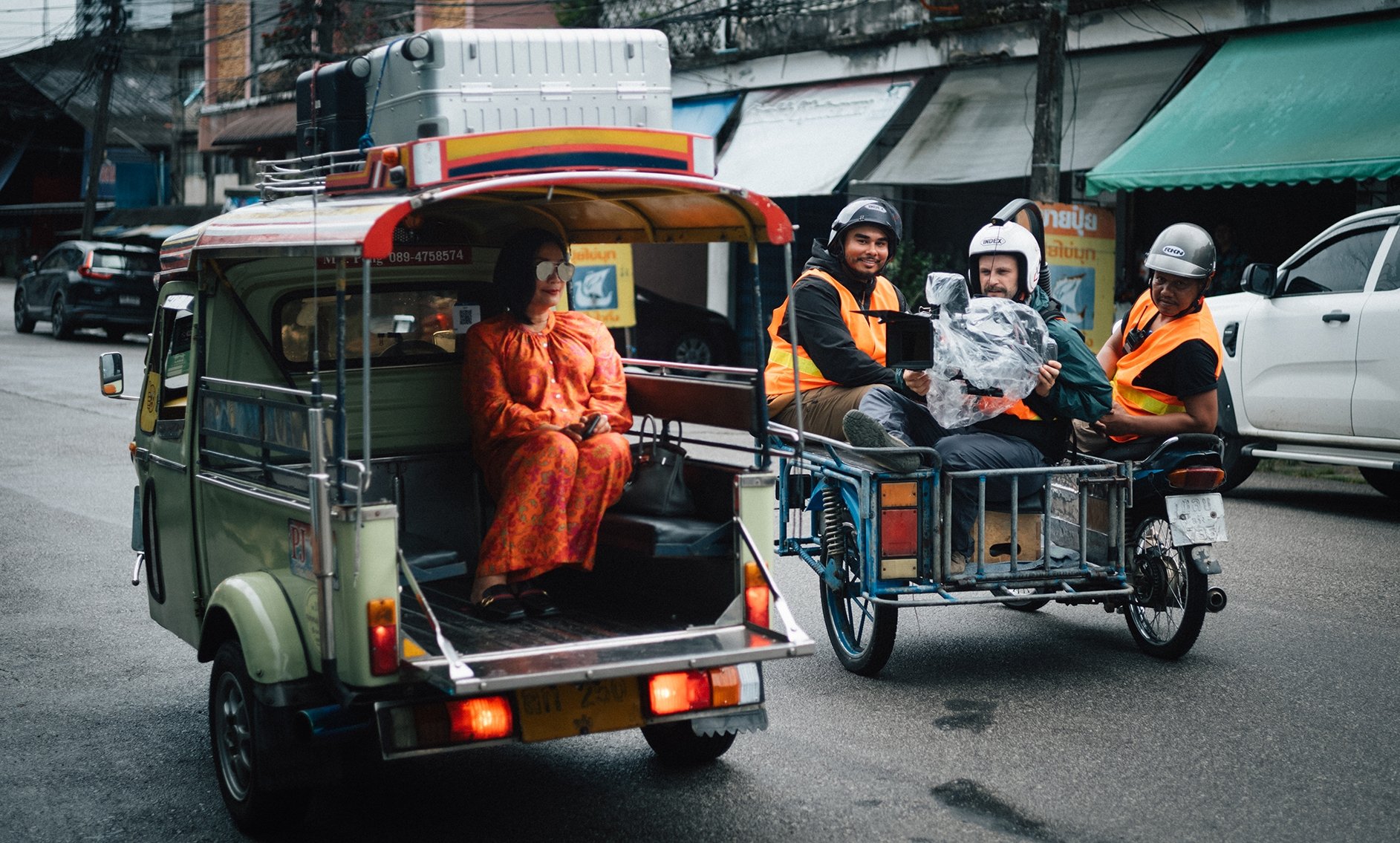
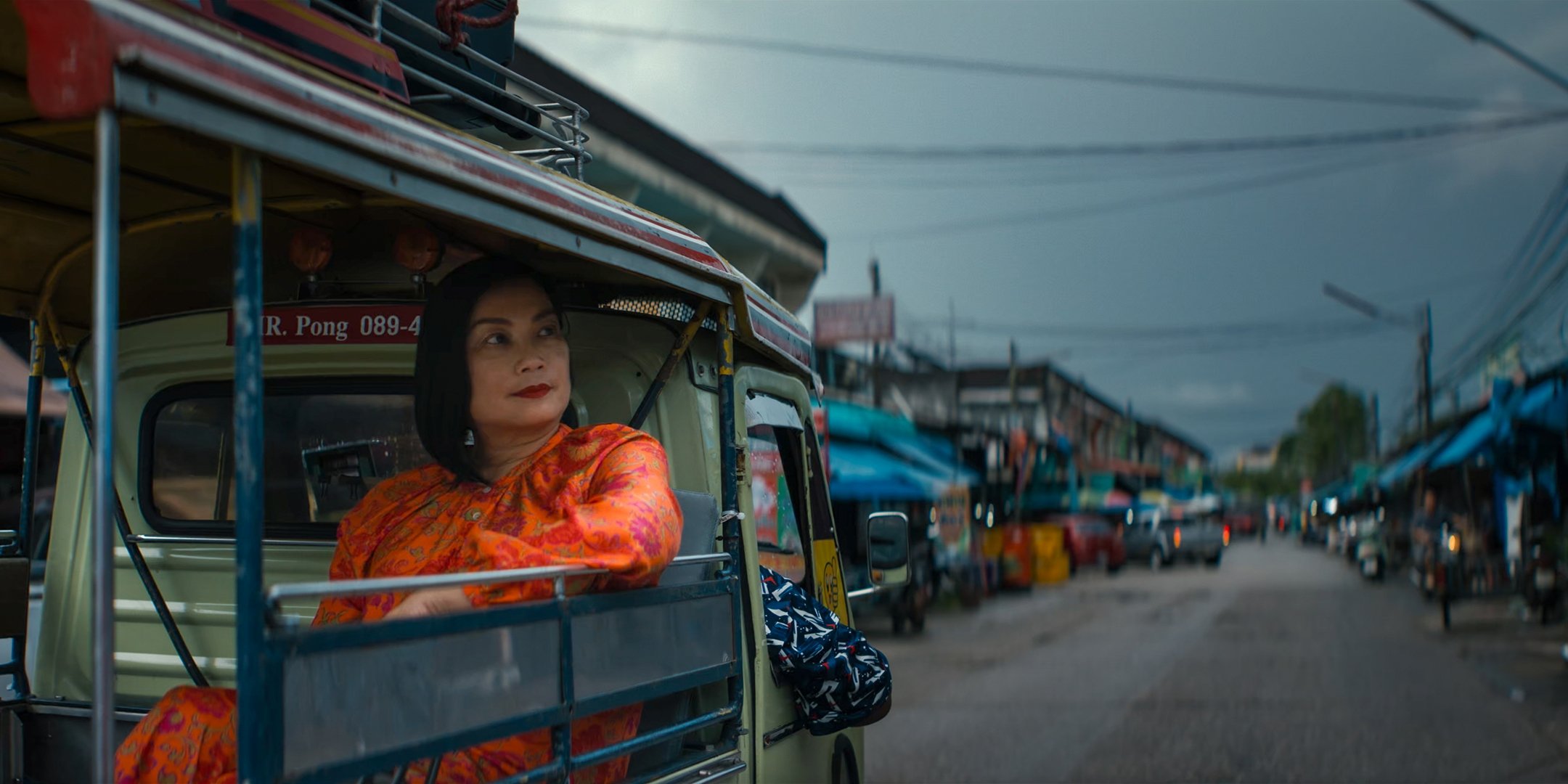
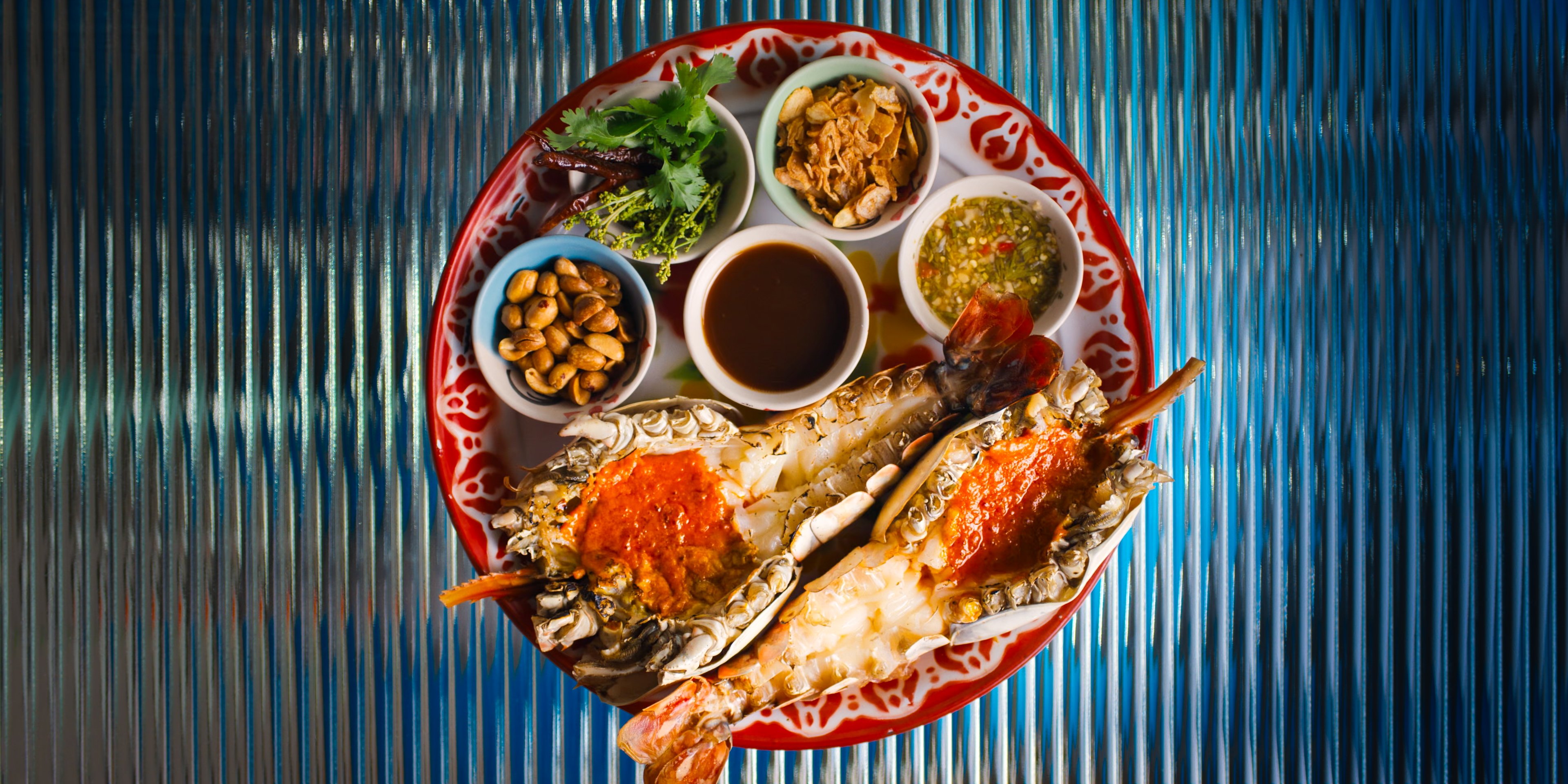
With the variety of kitchens and spaces in all types of lighting conditions, do you bring in supplemental lighting?
We need to see 360 degrees in the kitchen. I can't bring a light in on a stand. I learned early on that what’s most important are the lights I’m turning off. I walk into a kitchen and start flipping switches — what can I get rid of to make it more focused, single-source? These are very high-end spaces that want minimal impact, so it’s almost all available light. We'll make some thoughtful choices as to where they do their plating, making sure that the lighting stays soft with only one shadow, avoiding multiple sources. If I supplement, I take care not to influence the color of the dishes by staying balanced with a neutral color temperature, whether through gelling some lights or swapping out bulbs.
It's about making sure the quality of light is right. You can't fix the quality of light in a color grade, but you can fix exposure. Senior colorist Shane Reed at Mom&Pop has been with us all the way through. His work is crucial to that cohesiveness we talked about earlier and has been a big part of making the show as beautiful as it can be.
How much involvement do you have in the color grade?
Maximum — it’s a top priority for Andrew, David, and Brian. They make sure all the DPs are involved in coloring their episodes. Shane will do a pass that is absolutely beautiful and could go straight to Netflix, but we get time to sit with him and refine. Then the director comes in, and we refine even more. It’s an ideal color scenario.
That consistency makes it quite difficult to tell who shot what episode until the end credits roll.
I think that’s great — everything we’ve talked about has given the show a great recipe for consistency across 10 seasons and helped define our signature aesthetic.
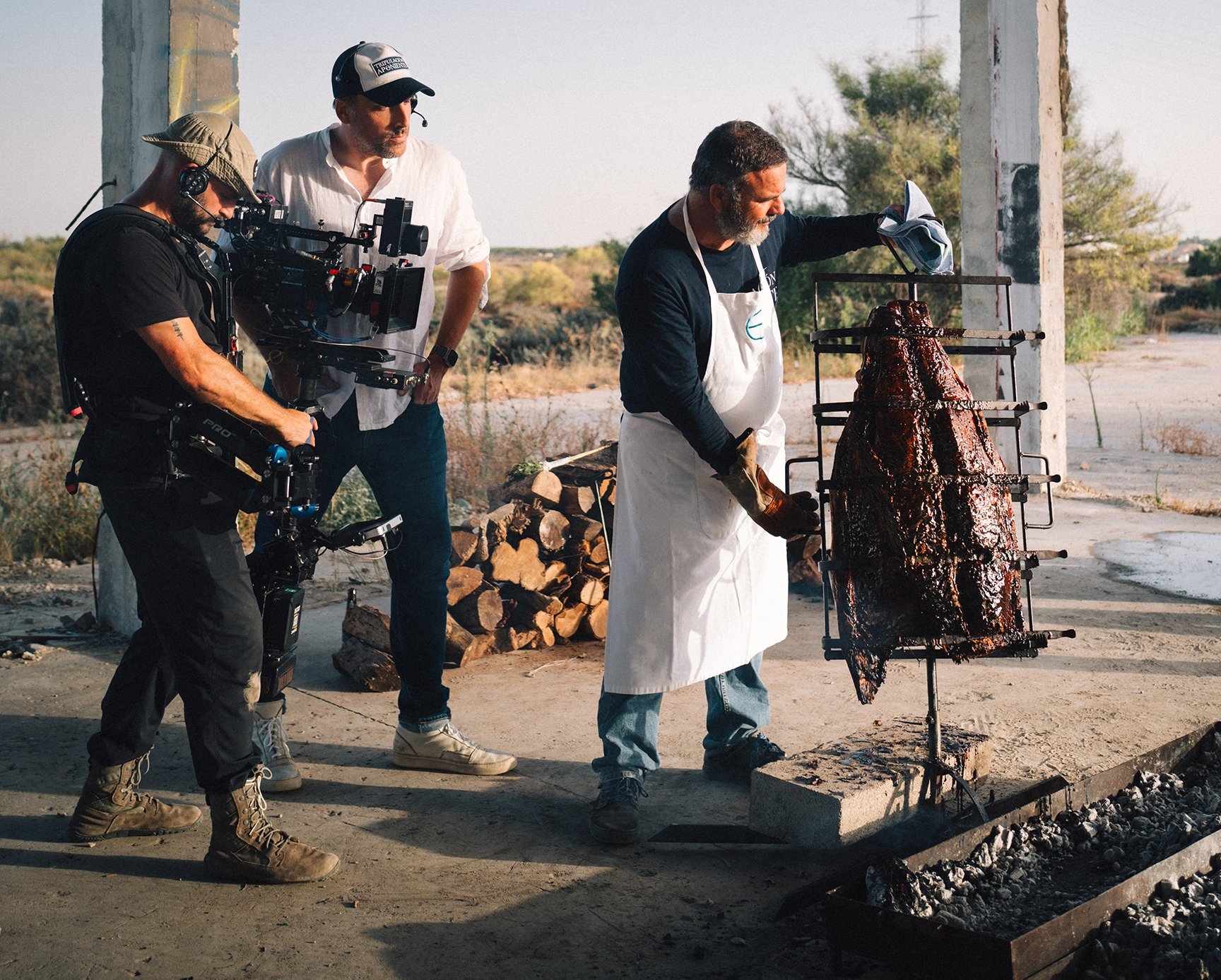
The deliverable is in 4K, but RED’s capture resolution is now up to 8K. What is your capture resolution?
Ideally, we shoot at the highest resolution possible. But as a documentary series filming abroad — often downloading footage overnight in hotel rooms — we had to be mindful of data rates. We opted to shoot at 5K instead of 6K, which still gave us options for reframing and stabilization. The Jamie Oliver episode was the first we captured in 8K for large format.
The sensor has enormous dynamic range that we take full advantage of because we finish in HDR. Earlier seasons were finished in SDR, but the range was always there with RED’s sensors. When Netflix debuted HDR, we were already a few seasons in, but Shane was able to go back through the catalogue to recolor and bring everything up to the new standard.
You’ve been around all these remarkable chefs. What has been the most amazing thing you’ve eaten?
I think my favorite was by Corrado Assenza at his Caffé Sicilia in Noto. He makes this simple yet decadent dish — a perfect brioche that you dip in his famous almond granita. I would have it for breakfast or as a snack — honestly, as many times a day as I could get away with. Sitting outside in a town square in Sicily having a granita… It’s one of the highlights of my life.
